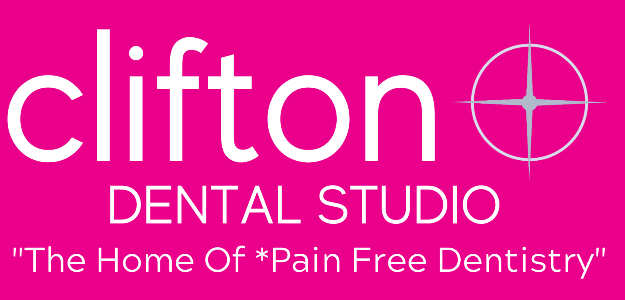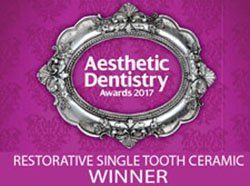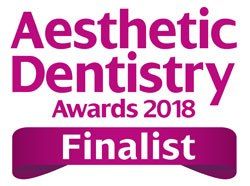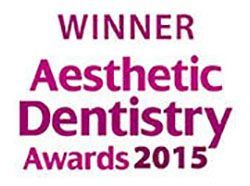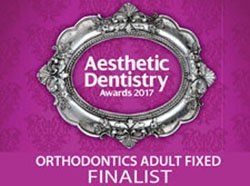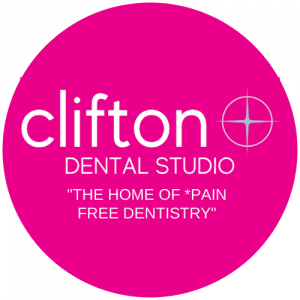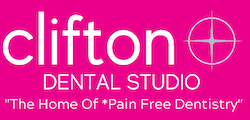Author Archive
Everything You Need to Know About Dental Bridges
Dental bridges are a form of false teeth that are designed to fill the spaces left by missing teeth. They can be invaluably beneficial both for health and cosmetic reasons. The dentist will create a dental bridge of the correct dimensions. The false tooth of a dental bridge is called a pontic. In the majority of cases it is fitted into a specified gap by attaching to the neighbouring teeth on either side using crowns. The porcelain crowns act as anchors for the pontic, creating a fixed, immovable dental bridge between the abutment teeth on both sides. Pieces of these adjacent teeth are removed to accommodate the crowns.Types of bridge
Traditional fixed bridges
The traditional fixed bridge is the widespread definition of a dental bridge, fitted using the mechanisms described above and forming an irremovable bridge. These can cover gaps left by one or more missing teeth where abutment teeth can anchor the pontic at either end.Resin bonded bridges
Resin bonded bridges are less expensive and usually recommended for the front teeth. The pontic is bonded to metal bands and these bands are linked to the abutment teeth using a hidden resin. The abutment teeth should be healthy for the resin bridge to be fully effective, but this type of bridge requires less preparation of the teeth.Cantilever bridges
Cantilever bridges are available for parts of the mouth that are not under much strain, particularly the area where the front teeth grow. These bridges are used in cases where an abutment tooth is only present on one side of the space.Why would I need a bridge?
Missing teeth can be unsightly and often lower the confidence of sufferers. But there are reasons unrelated to aesthetics that missing teeth need to be replaced. The remaining teeth can begin to place inordinate pressure on the teeth directly adjacent to the gap. These teeth are regularly forced to lean unnaturally into the space, which can change the person’s bite. There is also a higher risk of tooth decay and gum disease for people with gaps because specks of food build up in the space and are more difficult to remove or clean away. Some people with gaps suffer from speech impediments.The benefits
The bridges provide a naturalistic, pleasing and discreet appearance. The fitting process is usually quick and easy for the patient. With appropriate oral hygiene, a dental bridge can last successfully for approximately ten years. The upshot of this is that falling into slack oral hygiene routines can harm the bridges and also provoke tooth or gum infection, though this is also a risk for people without bridges. The treated teeth are often sensitive to fluctuating temperature for a number of weeks after the fitting, but this should soon diminish.The Ultimate Solution for Missing Teeth
Clifton Dental Studio is delighted to offer patients an array of tooth replacement treatments, including dental implants. Dental implants are innovative and they offer clients an array of benefits.
What are dental implants?
Dental implants are small screw-shaped dental appliances made from titanium. The role of an implant is to replace the root of the missing tooth and support a new restoration. Titanium is a biocompatible material, which means that the implant is able to integrate fully into the jawbone and once this has taken place, the new restoration is attached. One of the best advantages of dental implants is that they are versatile and can be attached to dentures, a dental bridge or a dental crown. Once this restoration is in place, the teeth will look like healthy natural teeth and you can enjoy the same level of function as a strong set of natural teeth.
Implant treatment
Implant treatment takes a while, but the benefits are worth the wait. The process of osseointegration, when the implant settles into the bone, takes between 3 and 8 months and once it is complete, the new restoration is attached. During the first appointment, after treatment planning is complete, the implants will be fixed into small holes in the jaw and then left to heal. Once the implants are settled, a crown, denture or bridge can then be attached and you can start enjoying the benefits of your treatment. Implant treatment is not uncomfortable because it is carried out under local anaesthetic.
The benefits of implant treatment
Dental implants are the closest thing you can get to natural teeth. They are built to last, create amazing, natural looking smiles and allow you to get on with everyday life without any worries. You can eat all the foods you like, you don’t need to worry about taking your implants out because they are fixed in position and you have peace of mind that they will never become loose or uncomfortable. Implants can also help to prevent bone loss.
We're More Than Just a Dental Studio…
Gone are the days when a dental surgery was simple the place to go for a filling or have a tooth removed. Nowadays, even a simple practice or an NHS dental surgery has the techniques and technology to perform at least some manner of simple cosmetic dentistry. Many of the leading surgeries in the country now also offer facial cosmetic work as well, Clifton Dental Studio being one of them.What else can you get from your dentist?
As well as the excellent dental work – both practical and cosmetic – and sublime customer service, Clifton also offers facial rejuvenation treatment. All the treatments in this area are non-surgical treatments that are becoming more and more popular. The treatments include injectable Botox treatment.Botox
Most people have heard of Botox, with good reason. It is one of the most well known and successful non-surgical facial cosmetic options. It is a fairly simple process in which diluted Botulinum is injected into designated areas. It’s used to decrease the appearance of wrinkles and blocks impulses between the nerves and muscles on the area of the face that it is injected to. One of the main concerns with non-surgical cosmetics is whether it will hurt. Botox uses an exceptionally thin needle which results in very little to no discomfort.The Pros and Cons of Teeth Whitening
Teeth whitening treatment is the practice of restoring teeth to their natural, whiter colour. Lots of factors affect the hue and colour of a person’s teeth as they age, from natural decay and alterations in the chemical structure, to more first hand influences like smoking and the consumption of certain foods and drinks that can stain the teeth. Aesthetically this can be quite bothersome and in a lot of cases can make a person feel self-conscious or lack self-esteem, especially in the growing age of the Hollywood smile. There are, however, pros and cons in regards to teeth whitening and as with all decisions, it’s important to weigh them up before jumping straight in. After all, this is your mouth we’re talking about.What are the pros and cons?
Pros:
- A boost in self-esteem: having a winning smile that you are proud to show off can do wonders for your self-confidence, leading to a happier, healthier outlook in life.
- A simple process: with many at-home teeth whitening kits and over the counter products, teeth whitening can be both simple and affordable.
- Safe treatment: with dental assisted teeth whitening procedures, there is little to no risk. Though of course it’s important to only receive treatment from experienced dental professionals.
Cons:
- Weakening of the enamel: unfortunately, some of the chemicals used in certain teeth whitening procedures can weaken the enamel over time leading to problems.
- Sensitivity: a downside to teeth whitening is that you might experience sensitive teeth.
Easy and Effective Root Canal Treatment
The prospect of root canal treatment is hardly appealing, as anyone who has previously experienced it will tell you. A procedure used to fix and save decaying or infected teeth, root canal treatment involves the removal of the damaged tissue from the inside of a tooth. Once the pulp underneath the layers is exposed, there is a high chance of inflammation and possible necrosis (pulp death) – as well as severe damage or pain to the tooth.
Root canal treatment can require one or more appointments, and can be carried out by a dental practitioner or endodontist (root canal specialist). Firstly, a full oral examination (including radiographs) will be carried out and if necessary, the use of a local anaesthetic. A latex sheet is positioned around the tooth to ensure the area is kept dry and clean, followed by an opening made at the top of the tooth. Next, the pulp is removed from the pulp chamber and the root canals are then cleaned and shaped in a way that will allow them to be securely sealed. Once the root canals are filled and sealed, the opening in the top of the tooth is filled with a temporary seal – then with future appointments, the progress of the root canal and filling can be monitored and adjusted should further treatment be needed.
Even though the pulp has been removed, your tooth will still be alive due to being nourished by its surrounding tissues. Once permanently restored, as long as proper oral care is maintained, the tooth has a high chance of keeping healthy. Your dentist will provide you with the appropriate aftercare following the operation, but you should also visit your dentist regularly to ensure longevity of your teeth and good oral hygiene.
Get a Bright Smile in Your Own Home!
Sitting at home, chilling out and enjoying your creature comforts while also lightening your smile sounds too good to be true, but with our home whitening treatment you really can get a brighter, whiter smile in your own home! If you have a hectic schedule or you simply want a fast, easy way to whiten your teeth, this could be the perfect choice for you!
About home whitening
We recommend home whitening if you have discoloured teeth and want a brighter, whiter smile. Whether your teeth have been dulled by your daily coffee habit or you just long for a brighter smile, home whitening is an excellent choice.
With home whitening, you’ll wear a bespoke whitening tray for a specified amount of time each day, all in the comfort of your own home. The trays are filled with a special whitening agent that gradually makes your teeth look lighter.
How long does home whitening take?
We generally recommend a treatment period of two weeks, but if you have sensitive teeth, we might suggest a shorter time frame. It is best to wear the trays for around six hours per day and most people wear them at night, so they don’t interfere with work or socialising.
After two weeks, your smile should look lovely and bright. It is possible to repeat treatment in the future to give your teeth a whitening boost.
Is home whitening painful?
No, home whitening isn’t painful and the trays are custom-made so they should fit very comfortably.You may notice very mild sensitivity after treatment, but this should only last for a very short period of time.
If you’d like to find out more about teeth whitening, call us today and make an appointment. After your consultation, you can begin treatment and look forward to a gorgeous new smile!
Restorative Dentistry at its Finest!
The teeth are made from strong stuff, but years of wear and tear and injuries can take their toll and most of us need restorative treatment at some point in our lives. Common types of restorative treatment include:- Crowns
- Fillings
- Dental bridges
Why would I need restorative dental treatment?
You may need restorative dental treatment if you have cavities, have injured or fractured your tooth, have had root canal treatment, have had a tooth knocked out or extracted or your tooth has been weakened by a large filling. The type of restoration you have usually depends on the extent of the damage to the tooth and the location of the tooth.About dental bridges
A dental bridge is a type of restoration used to replace a missing tooth. There are various types of dental bridge, including:- Traditional fixed bridge
- Cantilever bridge
- Maryland bridge (also known as a resin-bonded bridge)
Benefits of a dental bridge
Dental bridges are an effective means of replacing a missing tooth. They restore the look of the smile, giving you confidence when you smile and enable you to eat, drink and speak without any problems. Dental bridges should last for several years provided that they are well looked-after. It is important to keep the bridge clean and your dentist will check your bridge every time you have a routine check-up. Contact the team at Clifton Dental Studio, right in the heart of Bristol, for more information.Brushing, Flossing and Mouthwashing
Oral hygiene is incredibly important. Over the course of the day, as we eat and drink, tiny particles of food will become stuck in our teeth and between the gaps in our teeth. If these particles are not cleaned, they will begin to rot and decay, leading to bad breath, and then to bacteria in the mouth. This can lead to a build-up of plaque, a sticky substance that coats the outside surfaces of teeth, and eventually tartar, which discolours the teeth. The ultimate consequences of bad oral hygiene are gum disease and tooth decay, which are unsightly, painful and can lead to tooth loss, affecting speech function and the ability to eat as normal.Brushing and mouthwash
Brushing your teeth regularly is essential. Fluoride toothpaste should be used, as fluoride helps to strengthen teeth by binding with the enamel. Brush thoroughly, being sure to cover all tooth surfaces – front, back and the biting/chewing surface – but do not brush too vigorously as this can damage sensitive parts of the mouth. In addition, use an antiseptic mouthwash. As this liquid is swilled round the whole mouth, it works in addition to tooth brushing, to reach parts that a brush cannot. Mouthwash like this helps to remove the bacteria that cause plaque.Flossing
Flossing also helps to remove debris and bacteria that can ultimately lead to plaque or tooth decay. Flossing is important in addition to brushing, as it cleans the gaps between teeth, where a brush cannot reach, and so food is liable to get stuck here. Use a length of floss held between fingers of each hand, and gently curve it around each tooth, moving it from side to side to clean, down to the gumline. Be sure to cover both sides of each tooth, top and bottom. Brushing, flossing and mouthwash should be used daily, preferably in that order, to ensure your teeth are kept as healthy as possible.Everything You Need to Know About Gum Disease
At Clifton Dental Studio in Bristol we offer a full range of general dental services for all the family, including the prevention, treatment and management of gum disease.
What is gum disease?
Gum disease is one of the most common oral diseases. It occurs when the gums become inflamed as a result of irritation caused by harmful bacteria present in plaque. Plaque is a sticky film that is able to adhere to the surfaces of the teeth and gums. There are two types of gum disease: gingivitis, which causes the gums to become inflamed and sore, and periodontal disease, which causes damage to the tissues that support the teeth.
Although gum disease is very common, it is preventable and we live by the motto that prevention is always better than cure. We encourage out patients to attend regular dental check-ups and highly recommend dental hygiene sessions.
Spotting gum disease
Treating gum disease early is imperative, so it is important that you are aware of the warning signs. Symptoms of gum disease include bleeding, sore and red gums and swelling and tenderness in the gums.
If you notice these symptoms, it is important to see your dentist.
Treating gum disease
In cases of mild gum disease, good oral hygiene is usually sufficient treatment. However, periodontal disease is much more complex to treat and often takes several months. During the treatment process, patients are treated by dentists and dental hygienists and common therapies include regular cleaning treatments, root planing and scale and polish treatment, which removes plaque from the teeth and gum line. In cases where pockets have developed between the teeth and gums, intensive periodontal cleaning will be carried out to prevent the infection from spreading any further and to try to save the teeth.
